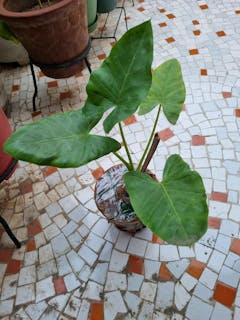Zantedeschia elliottiana
Family
Araceae
Origin
Nepal
Description
The Calla Lily 'Elliottiana' bulbs produce striking, golden trumpet-shaped flowers that are 6 inches in length, featuring a yellow finger-like spadix. These blooms stand out against the dark green, arrowhead-shaped leaves, which are heavily speckled with white. This perennial plant can be enjoyed for weeks in the garden or on a patio from midsummer to early fall.
Zantedeschia Elliottiana, commonly known as the Golden Calla Lily, forms 2-foot-tall clumps of 12-18-inch long leaves with white spotting. In midsummer, creamy white 5-inch spathes with purple throats add a touch of color to the display.
Calla Lily 'Elliottiana' features golden yellow flowers paired with distinctive speckled leaves. It blooms from December to April in plains and January to May in hilly areas. For a bright winter display, plant bulbs between September and November or October and November.
Environment
Calla Lily is mostly found by lakes in moist soils, therefore prefers well-drained soil in a full or half sun location. Callas grow best in a moist, well drained soil that has been enriched with compost and other organic matter.
Fertilize monthly with a good all-purpose fertilizer when actively growing.
When they are grown in pots, Calla Lilies should be kept constantly wet and should be given a weak solution of liquid plant food every 3 weeks while they are showing signs of new growth.
Remove the flowers when they begin to fade. When the plant has finished blooming, allow the foliage to mature and gradually reduce watering until the leaves have all died back.
The plant can be accompanied with low-growing plants to provide filling foliage over the base areas and covering up those thin stems. Anything that provides fullness and has a shallow root system serves best as a Calla companion, such as New Guinea Impatiens, Astilbes or Hydrangeas
Landscape Use
Calla Lilies are dramatic additions to outdoor gardens with their distinctive funnel-shaped blossoms, but also make excellent cut flowers






















